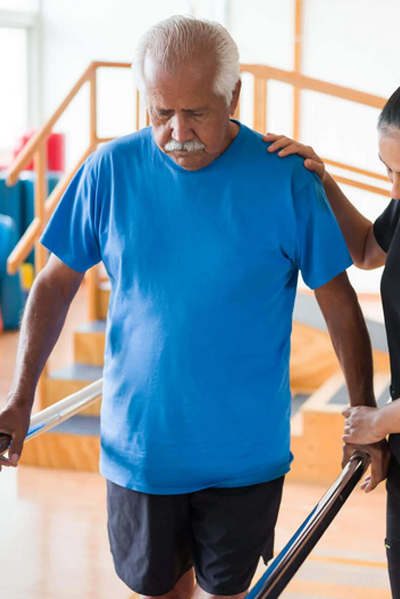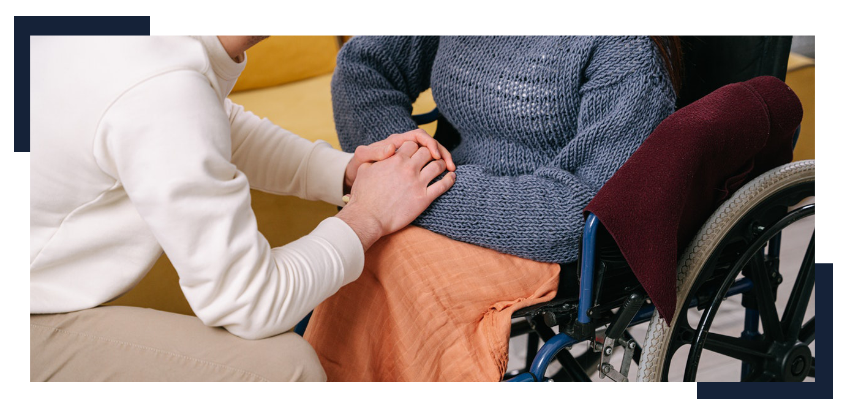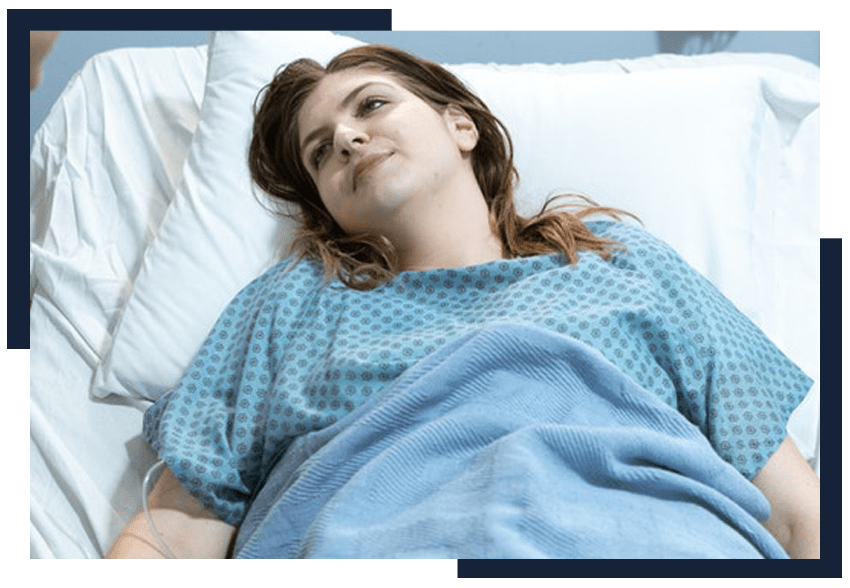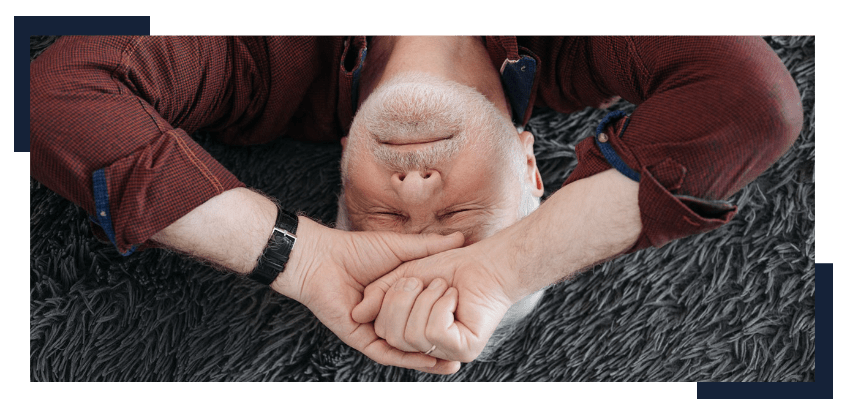Movement Disorders Therapy
Movement disorders can affect your general wellbeing. We offer movement disorder physical therapy to improve strength and alleviate pain. Contact us today.

What is Movement Disorder?
Classification of dystonia varies. First, categories can be according to the age of onset, including childhood, adolescence, or adulthood. The other common classification is according to the body part it affects.
Movement disorders refer to a group of neurological conditions that cause increased atypical movements, some of which are voluntary and involuntary. The conditions may also cause reduced or sluggish activities. Movement requires coordination from various parts of the brain, working in unison with nerves and muscles.
The brain’s thoughts stimulate or trigger the motor brain area to send signals to the muscles, finally acting. The flow of information between these areas regulates speed, power, balance, and coordination to carry out the action smoothly.
Movement disorders disrupt this information flow leading to the loss of a person’s independence and difficulties while carrying out daily activities. Movement physical therapy is effective in helping a patient adapt to living with these conditions. At OneRehab, we formulate therapy programs designed to suit each patient’s needs.

Common Movement Disorders
Movement disorders affect millions of people though they vary in severity. There are various types of movement disorders. Each type may require a different approach in treatment and management. The most common movement disorders are:
Patient Wellbeing is Our Primary Concern
We understand the fact that payment is a concern, and sometimes a challenge.

Ataxia
Ataxia refers to when a person lacks coordination of voluntary movement and muscle control. They can include walking, picking objects, and many others. This degenerative disorder affects the spinal cord, brain, and brainstem.
What are the Symptoms?
- Difficulty swallowing
- Slurring speech
- Eyes moving back and forth without volution (nystagmus)
- Poor coordination and loss of balance
- Difficulties with eating, writing, and other fine motor skills
- Walking unsteadily or stumbling
What Causes Ataxia?
Deterioration of the nerve cells affecting the cerebellum, the parts that control coordination, leads to ataxia. There are two types of ataxia, hereditary and acquired. Hereditary ataxia is further grouped into autosomal dominant and autosomal recessive ataxia.
Apart from genetic causes, there are other various reasons where one can get ataxia.
- Head trauma leading to damage to the brain. They can occur from accidents, and they happen suddenly.
- Cerebral palsy
- Stroke
- Autoimmune diseases such as sarcoidosis, multiple sclerosis, and others
- Infections such as Lyme disease or HIV
- Brain abnormalities such as tumors
- Paraneoplastic syndromes
- Toxic reactions to drugs such as phenobarbital and others
- Thyroid problems
- Vitamin B-12, Vitamin E, or thiamine deficiency
In cases of acquired ataxia, sometimes there is no specific cause of the condition.h much-needed services, including physical, occupational therapy and a lifestyle change.
Treatment and management
In most cases, doctors look for the underlying cause, which gets treated, resolving the condition. However, in other cases, a patient can take medication to help manage symptoms such as depression, fatigue, tremor, or dizziness.
Ataxia patients can also use adaptive devices and other therapy forms to make it easier to live with the disease. We offer ataxia physical therapy to patients across all stages of the condition. For those using adaptive devices such as hiking sticks for walkers, we train them to use them effectively.
Speech, physical, and occupational therapies help patients communicate, enhance coordination, and re-learn daily tasks, respectively.
Functional Movement Disorder
Another name for the condition is functional neurologic disorders. It occurs when one experiences an unusual, involuntary body movement. FMD arises when there is an issue with how signals are sent in one’s brain.
The exact cause of the functional neurologic disorder is still uncertain.
- Reaction to stress
- Psychological trauma
- Physical trauma
- Underlying neurological conditions
Treatment and management
It is crucial to seek medical attention when diagnosed with FMD. Though there is no known cure, treatment focuses on management and care. OneRehab is the best functional movement disorder therapy clinic helping patients with physical and occupational therapies.

Dystonia
Dystonia is a movement disorder causing a person’s muscles to contract uncontrollably. It makes the body twist and turn involuntarily, which leads to abnormal postures or repetitive movements.
What are the Symptoms?
- Foot cramps
- Dragging leg
- Involuntary neck pulling
- Uncontrollable blinking
- Difficulties with speech
What are the Causes?
Not all cases of dystonia are attributable to a cause. The condition affects the basal ganglia, the area that starts muscle contractions. Damage to that area affects nerve cell communication. The primary causes of the condition are:
- Brain trauma
- Tumor
- stroke
- Infection
- Oxygen deprivation
- Carbon monoxide poisoning
- Reactions to drugs
Treatment and management
Injecting botulinum toxin into muscles can reduce or get rid of muscle contractions, thus improving abnormal posture. The injections are repeated after every three to four months. Patients can receive other medications to alleviate the symptoms.
Living with the condition means patients have to learn to live with it—modern movement physical therapy teaches patients coping mechanisms. In our rehab clinic, we provide therapy to help patients manage uncontrollable shaking. Therefore, improving posture which allows a patient to conduct daily activities.

Huntington's Disease
Huntington’s disease is hereditary and rare. It leads to progressive damage of nerve cells in the brain. The disease significantly affects a person’s cognitive and movement abilities. It can start in the early 30s or 40s though there are cases of early-onset.
What are the Symptoms?
Huntington’s condition leads to cognitive, movement, and psychiatric disorders.
Cognitive symptoms
- Experiencing problems when trying to organize, prioritize, or focus on a task
- Lacking impulse control leading to outbursts, sexual promiscuity, or acting without thinking
- Not being aware of one’s abilities or behaviors
- Problems learning new information
- Slow to find words or process thoughts
Movement Disorder symptoms
- Writhing movements or jerking involuntarily
- Problems with the muscles such as rigidity
- Difficulty swallowing and speech
- Impaired balance, gait, or posture
- Slowed eye movements
Psychiatric Disorder symptoms
- Feeling irritated or sad
- Insomnia
- Withdrawing socially
- Thoughts of death or suicide
- Loss of energy and fatigue
Treatment and Management
There is no known cure for the condition. Medication helps in easing the symptoms and side effects to avoid a quick progression.
The essential management method is therapy. A psychotherapist provides talk therapy helping a patient with behavior and managing their expectations as the disease progresses.
Speech therapy aids in improving muscle control around the mouth, hence improving speech. Our qualified therapists also help patients learn how to use communication devices. Physical therapists teach patients safe exercises that increase strength. The exercises also help in maintaining mobility. It also includes instructions on how to use walking devices.
Multiple System Atrophy
MSA or Multiple system atrophy is a rare degenerative neurological condition. It affects the body’s involuntary functions, including breathing, blood pressure, bladder, and motor control. MSA’s cause is still unknown.
There are two types of symptoms, Parkinsonian and cerebellar.
Parkinsonian Type Symptoms
- Muscles becoming rigid
- Issues with bending arms or legs
- slow movements
- Problems with balance and posture
- Tremors
Parkinsonian Type Symptoms
- Unsteady gait and losing balance
- low-volume, slow or slurred speech, dysarthria
- Problems with vision such as blurred or double vision
- Difficulty chewing or swallowing
Management and Treatment
There is no cure for this condition. Medication focuses on treating the symptoms. Patients can get medication to raise blood pressure, reduce symptoms, help with bladder care, and improve breathing and swallowing.
Patients with multiple system atrophy start therapy early to help slow down the progression. We have a reputation for providing the best multiple system atrophy physical therapy. It allows patients to retain most of their motor functions, with speech therapists helping with communication and swallowing problems.

Parkinson's Disease
Parkinson’s disease happens when nerve cells in the brain region controlling movement die or get impaired. It leads to shaking, walking difficulty, stiffness, coordination, and balance. It begins slowly becoming worse with time.
Signs and Symptoms
- A tremor in the leg, hand, head, or jaw
- Slow movement
- Stiff limbs and trunk
- Impaired balance and coordination
Treatment and Management
Like most neurological disorders, there is no cure for Parkinson’s disease. One can only manage the symptoms, mostly using medication. Additionally, movement specialists provide physical therapy, which helps a patient to regain strength. Patients are also taught how they can adapt to their environment through occupational therapy. At our clinic, we focus on the patients to increase flexibility and balance, which improves their well-being.

Prograssive Sipranuclear Palsy
PSP condition causes problems with walking, eye movements, and balance. The disease progresses and worsens over time.
Signs and Symptoms
- Losing balance
- Inability to open the eyes
- Awkward movement and stiffness
- light sensitivity
- sleep disturbances
- Impulsive behavior
- depression
- Anxiety
Treatment and Management
Patients can use eyedrops to ease dry eyes as a result of blinking too much. Parkinson’s disease medication is also used when managing symptoms, which increases controlled movements. Physical therapy, when well provided, aids in alleviating the symptoms and keeping a patient strong. If you are searching for a physical therapy clinic near me, we are unparalleled in providing a tailor-made treatment plan.

Physical Therapy Techniques for Functional Movement Disorder
Patients who have movement-related conditions can continue with medication. However, physical therapy for movement disorders helps with improving strength, allowing function maintenance in the activities of daily living.
Gait Training
Your gait is crucial whether you want dance movement therapy for autism spectrum disorder or to engage in other exercises. Gait training improves your ability to walk effectively. After an illness or injury, the physical therapist can use various adaptive devices that help you improve your strength, balance, and independence. During the treatment, you can practice walking in a straight line or use a treadmill to help with movement.
Strengthening Exercises
Movement requires strong muscles. Strength training exercises are crucial in functional movement disorder physical therapy. The physical therapist can focus on the upper extremity and bilateral extremities to help you maintain an active lifestyle. Wheelchairs, canes, or walkers can be appropriate to achieve this goal.
Patient Education
Patient education is also crucial in helping them recover from movement disorders. Our physical therapists also educate the family and caregivers on the best way to handle a patient. They learn how to help them exercise and the safest way to do so.
Improving Balance and Flexibility
A physical therapist can include stretches in the treatment program to improve flexibility. As a result, you can achieve the desired range of motion at each joint and muscle to attain movement without being limited.
Furthermore, you can perform various balance exercises to prevent falls and improve your movement. Such exercises include:
Furthermore, you can perform various balance exercises to prevent falls and improve your movement. Such exercises include:
- Static standing balance activities such as limb stance, standing on compromised surface tandem standing, and others.
- Sitting balance activities
- Dynamic balance exercises: These include ball toss and balance with perturbations.
Transfer Training
In cases where patients have severe movement disorders, the physical therapists can include transfer training. It includes improving rolling side to side on the bed, changing from a sitting to a standing position, and many other transfer exercises.
OneRehab
1761 International Pkwy Suite 135, Richardson, TX 75081, United States
Email Us
info@onerehab.com
Call Us
972 845 7875
Working Hours
M - F 7:00 AM – 7:00 PM
Sat 8:00 AM – 2:00 PM



